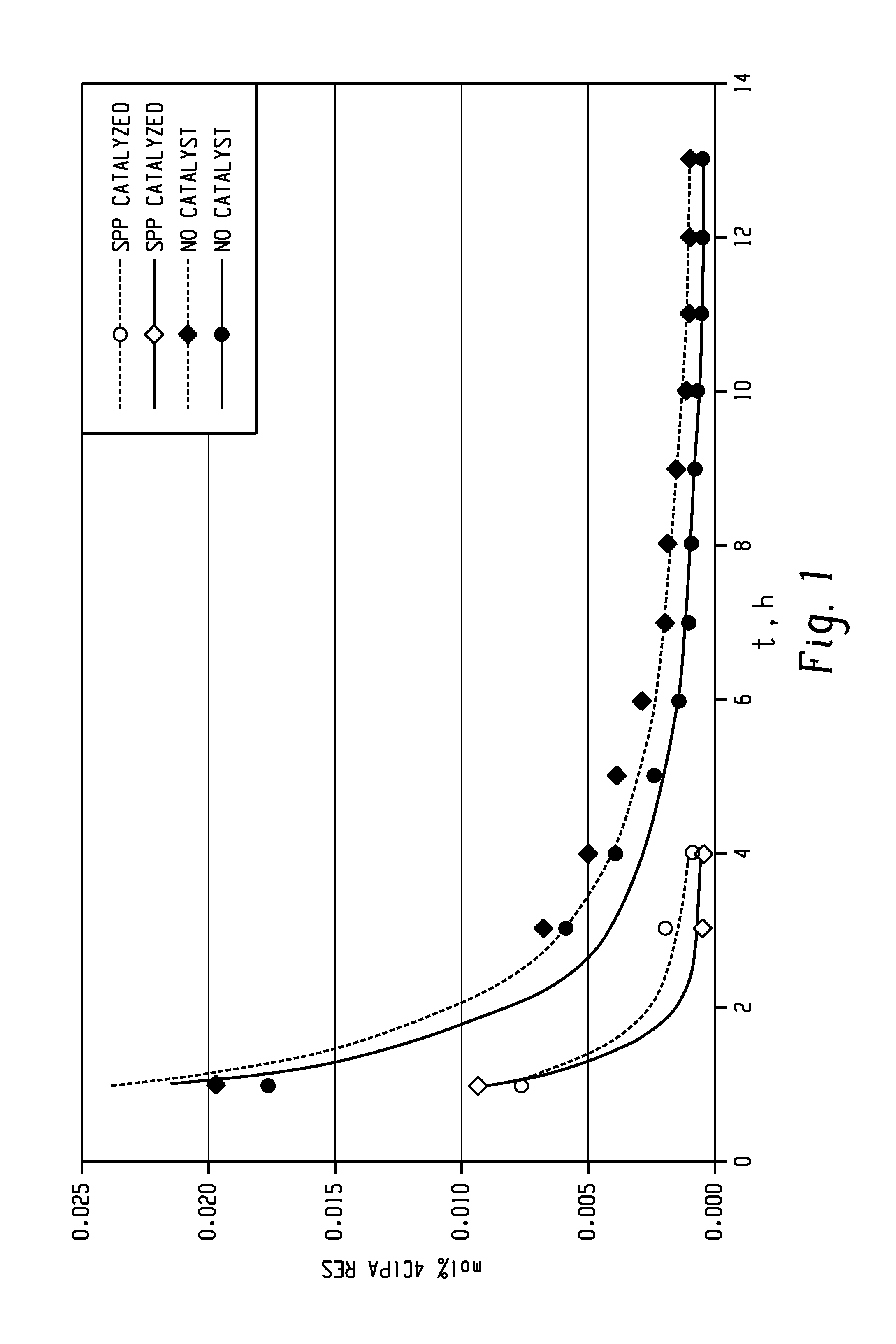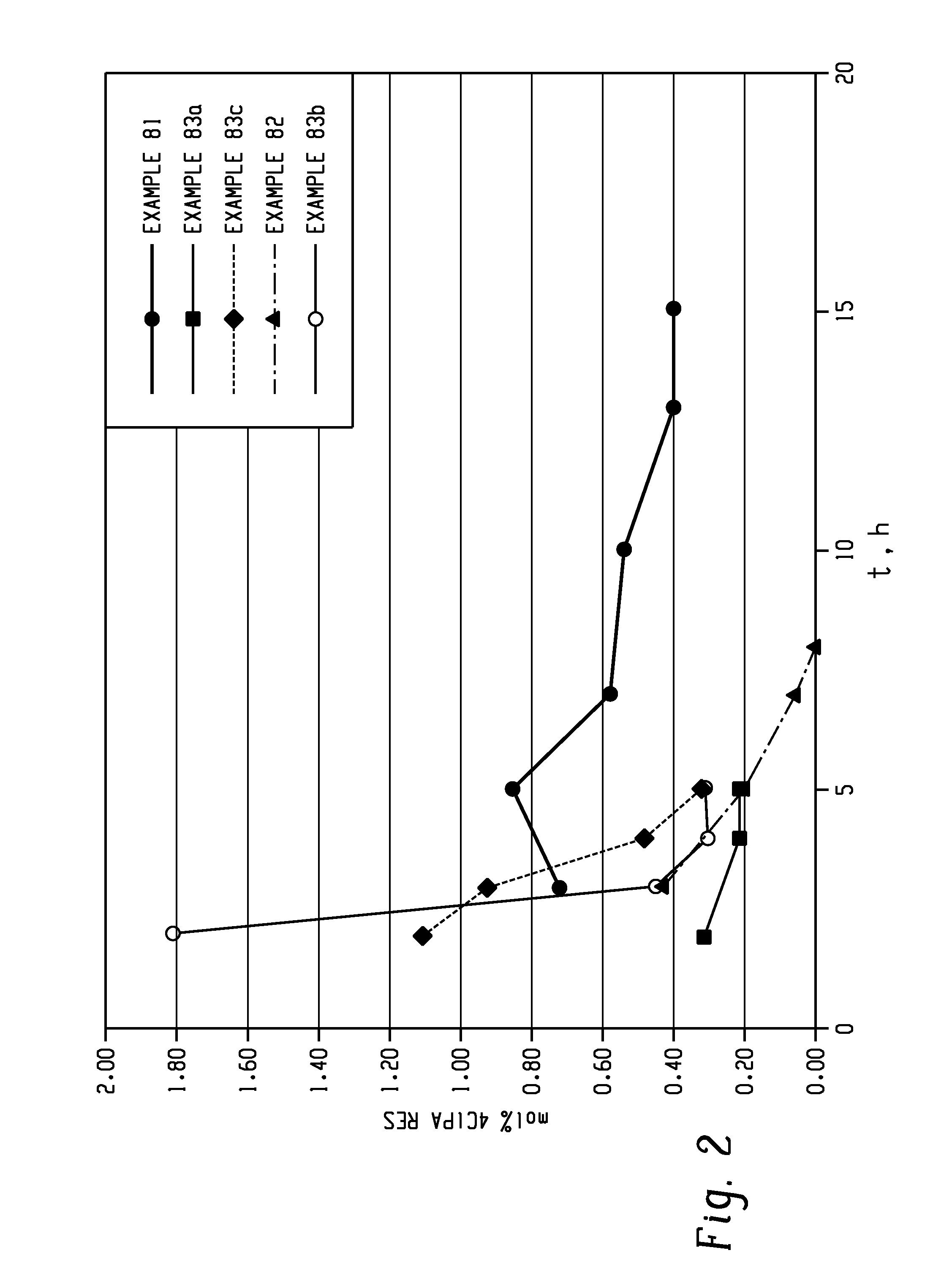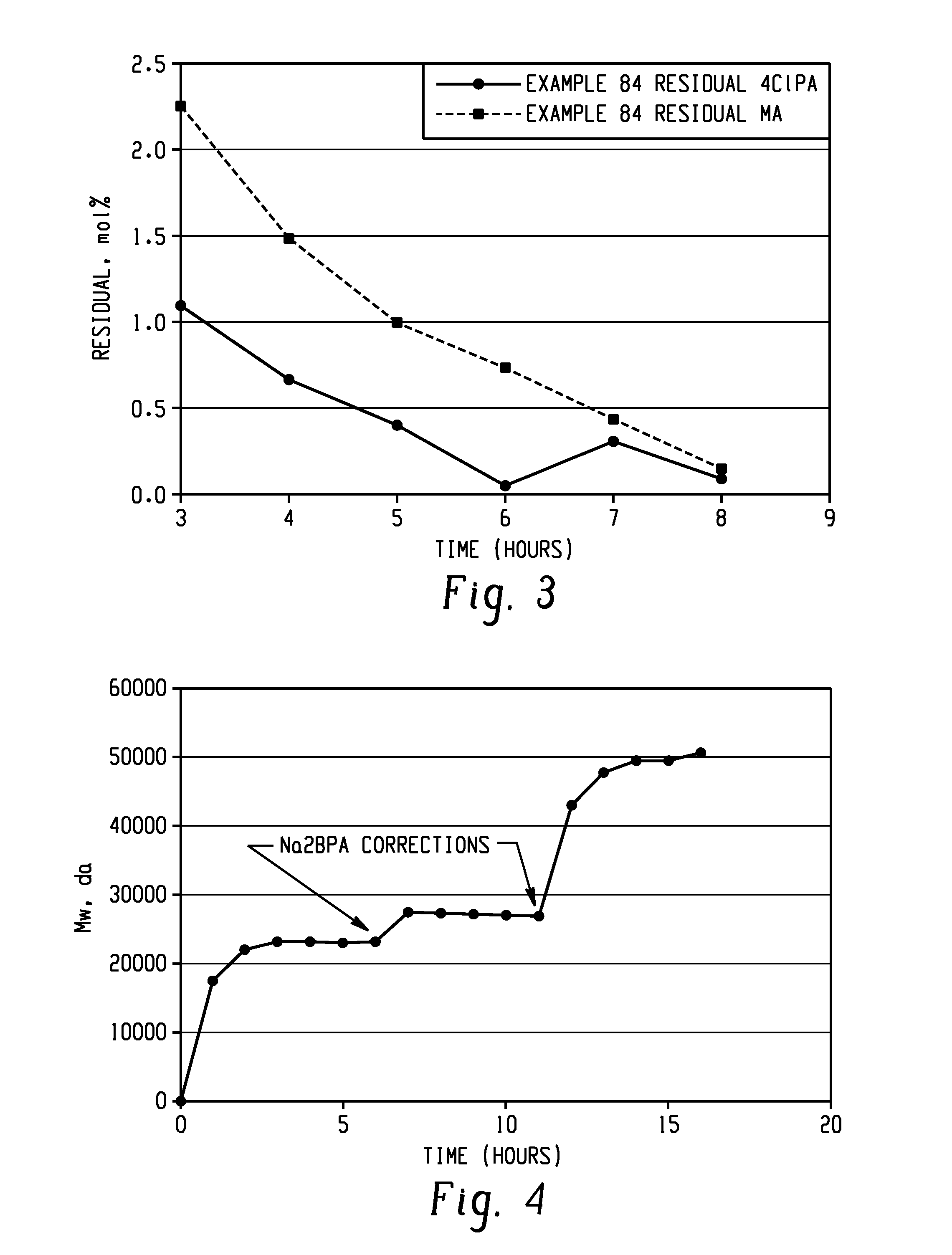Methods of manufacture of bis(phthalimide)s and polyetherimides, and bis(phthalimide)s, and polyetherimides formed therefrom
a technology of polyetherimide and polyetherimide, which is applied in the field of polyetherimide compositions of bis (phthalimide) and polyetherimide, and the manufacture of bis (phthalimide) s and polyetherimides, and the formation of polyetherimides therefrom, which can solve the problems of affecting the physical properties of polyetherimide, forming unwanted by-products, and decomposition
- Summary
- Abstract
- Description
- Claims
- Application Information
AI Technical Summary
Benefits of technology
Problems solved by technology
Method used
Image
Examples
examples
Materials
[0134]The materials in Table 1 were used or made in the following Examples and Comparative Examples.
TABLE 1AcronymDescriptionSourcePAPhthalic anhydride3-ClPA3-Chlorophthalic anhydrideSABIC4-ClPA4-Chlorophthalic anhydrideSABICClPAMixture of 3-chlorophthalic anhydride andSABIC4-chlorophthalic anhydrideClPAMI1,3-bis[N-(4-chlorophthalimido)]benzeneExamplesMono-Mixture ofExamplesClPAMI1-amino-3-N-(4-(MA)chlorophthalimido)benzene,1-amino-3-N-(3-chlorophthalimido)benzenemPDmeta-Phenylene diamineDuPontDDA4,4′-diaminodiphenyl sulfoneAtulBPA2,2-Bis(4-hydroxyphenyl)propane,Hexion(Bisphenol A)BPANa2Bisphenol, disodium saltSABICBPADABisphenol A dianhydrideSABICPCPpara-Cumyl phenolSABICPEIPolyetherimideExampleso-DCBortho-DichlorobenzeneFischerHEGClHexaethylguanidinium chlorideAtul Ltd.SPPSodium phenylphosphinateAkzoTPPBrTetraphenylphosphonium bromideSigma-AldrichC6B1,6-Bis(tributylammonium)-hexaneSigma-AldrichdibromidePyrEHCl4-(N,N-dimethyl)-2-ethylhexylpyridiniumSigma-AldrichchlorideTBA...
examples 40-46
Imidization Process
[0162]C1PAMI was also made with the use of HEGC1 as the imidization catalyst instead of SPP. Distilled o-DCB (19.74 parts) was charged to an appropriately sized oil jacketed vessel, equipped with a mechanical stirrer, material addition lines and charge pot, an overhead vapor line with condenser, and means to maintain a nitrogen atmosphere. The quantity of o-DCB used in a particular reaction was based on the desired percentage solids of the imidization reaction. The o-DCB was heated to 120° C. under nitrogen with stirring. Molten chlorophthalic anhydride (155.04 parts) was added to the vessel with stirring under nitrogen. Solid phthalic anhydride (0.0309 parts, 0.216 mole equivalents) was charged to the vessel through a charge pot, under nitrogen. The pot was flushed with a small amount of distilled o-DCB. The temperature of the mixture was increased to about 160° C. over a period of 45 minutes by applying hot oil on the jacket of the vessel, with stirring under ni...
examples 60-65
[0181]The following general procedure describes the use of HEGC1 as an imidization catalyst to produce DDS-C1PAMI from 3-C1PA and DDS. As described above, 4,4′-DDS, 3-C1PA (or 3- and 4-C1PA mixture), 1 mol % of HEGC1 (54.8 mg as a 17 wt % solution of HEGC1 in dry o-DCB), and the solvent were charged to the flask and heated to reflux. Approximately 40 mL of o-DCB was distilled from the flask to afford a clear solution. The reaction was kept at reflux for 1.5 hours. A sample was withdrawn for HPLC analysis and the appropriate correction was made (DDS or C1PA add) to place the stoichiometry at 0.25 to 0.3 mol % excess C1PA. The reaction mixture was allowed to proceed with internal reflux until the residual C1PA and monoamine (MA) levels were met (7-9 hours) (Example 60).
[0182]In Example 61, 0.2 moles (with respect to DDS) was added with the monomers, and the reaction was allowed to proceed as described above.
[0183]In Example 62, 0.2 moles of HEGC1 (with respect to DDS) was added after ...
PUM
| Property | Measurement | Unit |
|---|---|---|
| viscosity | aaaaa | aaaaa |
| temperature | aaaaa | aaaaa |
| Tg | aaaaa | aaaaa |
Abstract
Description
Claims
Application Information
 Login to View More
Login to View More - R&D
- Intellectual Property
- Life Sciences
- Materials
- Tech Scout
- Unparalleled Data Quality
- Higher Quality Content
- 60% Fewer Hallucinations
Browse by: Latest US Patents, China's latest patents, Technical Efficacy Thesaurus, Application Domain, Technology Topic, Popular Technical Reports.
© 2025 PatSnap. All rights reserved.Legal|Privacy policy|Modern Slavery Act Transparency Statement|Sitemap|About US| Contact US: help@patsnap.com



